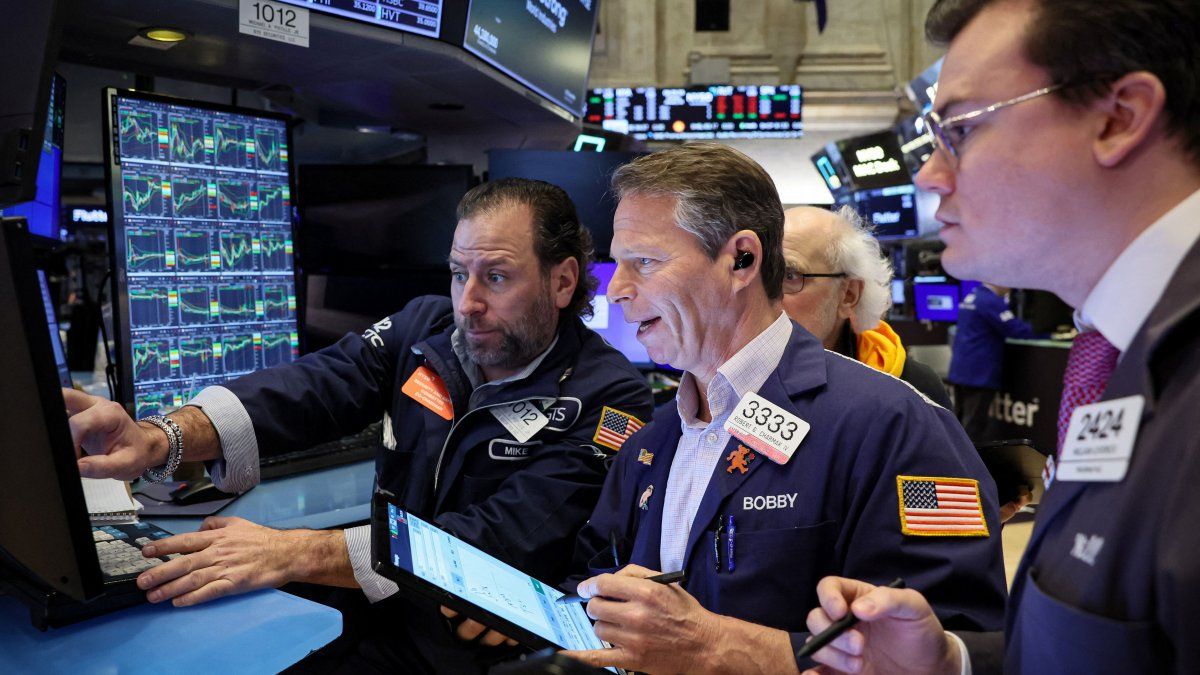In a record year for US stocks, two pieces of information are ringing alarm bells. For the first time in more than 20 years, Wall Street’s main index, the S&P 500, registers what analysts call “bad breadth.”
And unless a huge sell-off occurs before the end of the yearthe S&P 500 is on track to show a return of over 25%including dividends. ANDThe index achieved a similar return last year.
A 50% increase in two years is extraordinary. The long-term average annual return of the S&P 500 is about 10%. These returns are mainly driven by the so-called “Magnificent Seven”: Tesla, Amazon, Alphabet, Apple, Meta, Microsoft and Nvidia. All of these companies have benefited from the seemingly limitless promise of artificial intelligence (AI).
Trump’s election also gave stocks a strong boost, with investors confident that promises of low regulation and tax cuts would boost profits. In market terms, the index is being driven by what is known as “inertia trading,” also known as FOMO (fear of missing out).
American retail investors They haven’t been this bullish on stocks in 40 years.. 60% expect stocks to rise in the next 12 months. And it’s not hard to see why, with the average value of equity portfolios soaring to $250,000, compared to $150,000 just 18 months ago.
Data that should be taken into account
However, while retail investors are driven by FOMO into stocks, those who actually run the companies appear to be exiting them. The number of corporate executives selling their shares has reached its highest level in 20 years.
According to Bloomberg data, There are six times more executives selling shares in their companies than buying them. Another key indicator suggests that the “smart money” is exiting its positions, while the general market continues to rise.
During the last nine days, more stocks in the index have fallen than risen. The last time the market experienced consecutive declines of this nature was in 2001, after September 11, 1998, when the market eventually fell 22%, and in 1996, when the market retreated 11%.
This makes the US market a dangerous place, especially when there are more stocks on the decline than on the rise, considering how much the S&P 500 has risen driven by weak fundamentals since the Trump era.
Investment bank Macquarie believes the US market is “overly optimistic” and is advising its clients to start looking at defensive stocks. “We believe surprises will turn negative in January,” Macquarie wrote to clients. However, there are Trump- and Elon-sized clouds on the horizon that could change the consumer spending landscape.
If Trump imposes more tariffs, goods will become more expensive, which would not only reduce sales but could force the Federal Reserve to raise rates to contain inflation.
At the same time, the Department of Government Efficiency is considering deep cuts to the public sector, whose dollars eventually end up in private pockets.
It’s no secret that the excitement around artificial intelligence (AI) has propelled the US stock market to new all-time highs. The S&P 500 is trading near its 52-week high, and something similar is happening with the Nasdaq 100.
However, with billions being invested in AI, concerns are growing that the technology is not delivering on its promises of returns. So much so that there is speculation that an AI bubble is forming. And if it bursts, it could trigger a new market crash similar to the dot-com bubble of the late 1990s.
Is AI in a bubble?
Stock market bubbles occur in five stages:
- Displacement
- Boom
- Euphoria
- Taking profits
- Pop
If AI is in a bubble, it is likely in the Euphoria stage, where enthusiasm drives valuations above fundamentals, driving prices to all-time highs based on very high return expectationss. There are already hints of this when looking at stocks like Nvidia (NASDAQ:NVDA).
nvidia
If AI is in a bubble, it is likely in the Euphoria stage.
Reuters
Spending on AI has generated incredible demand for Nvidia’s AI accelerators, resulting in a dramatic increase in revenue and profits, also driving up its stock price. In just the last five years, Nvidia’s stock price has risen more than 2,500%.
However, while this business performance would be cause for celebration for shareholders, the triple-digit earnings growth was not enough to meet expectations, resulting in a muted investor reaction and a near 10% drop in just a few weeks. days. If this marks the beginning of the profit-taking phase, the AI bubble could be about to burst.
Is this a new dotcom bubble?
High-profile pessimistic investors, such as Jeremy Grantham, have already begun to draw parallels between the AI bubble and the dotcom bubble. However, these concerns seem somewhat exaggerated.
There is no denying that the ratings are high. But most AI stocks are already generating revenue, and some like Nvidia are extremely profitable. In comparison, Most internet companies in 1999 were startups with no revenue and no proven applications in the market.
While it’s difficult to predict when this bubble might burst, there’s a chance that AI investing could end up delivering on its promises, justifying current high valuations and avoiding a bubble altogether. For now, some prefer to remain wait and see.
Source: Ambito




